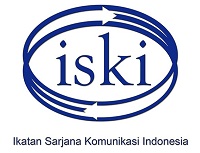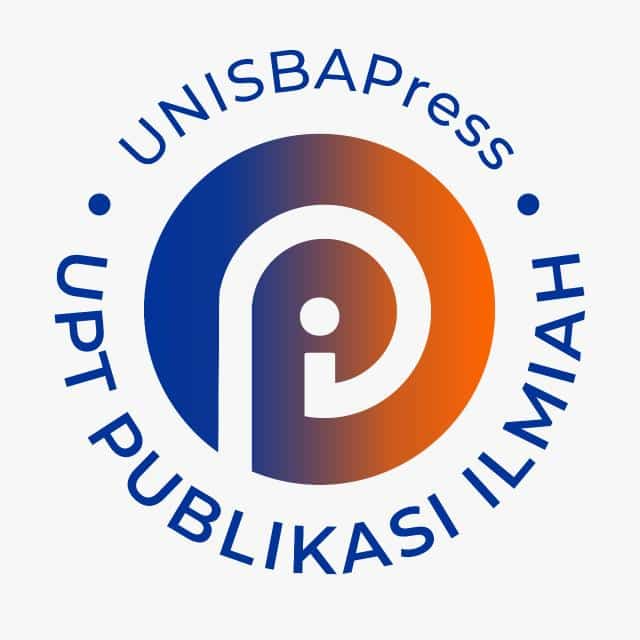The Effect of Using Storytelling on Destination Image Is Influenced By Experience
DOI:
https://doi.org/10.29313/mediator.v16i2.2162Keywords:
Bali, destination image, elaboration likelihood model, storytelling, tourist experienceAbstract
There are still debris of anxiety due to the fatality of the Covid-19 Pandemic which has affected the effect of the tourist experience on the image of the destination of Bali (destination image). This study aims to evaluate the effectiveness of story-telling content on the image of a Bali destination which is mediated by tourist experience or travel experiences in these promotional videos. For this reason, this study tested the theoretical hypothesis of the Elaboration Likelihood Model (ELM) based on the causality relationship between the peripheral route (story-telling variable) and the central route (tourist experience variable) to audience attitudes (destination image variable). In order to achieve this explanatory goal, the researcher uses an experimental method on tourists who have never visited or have visited Bali. The collected data is then tested statistically using path analysis to find the most appropriate causality route model. The results of this study indicate that storytelling does not completely affect the image of the destination but is also influenced by elements of the tourist experience.
References
Akbar, C. (2021). Kementrian Luhut Terus Promosikan Work From Bali hingga ke Startup. Tempo.
Badan Pusat Statistik. (2020). Statistik wisatawan mancanegara ke Bali 2019.
Badan Pusat Statistik. (2021a). Statistik wisatawan mancanegara ke Bali 2020.
Badan Pusat Statistik. (2021b). Statistik Wisatawan Nusantara 2020.
Badan Pusat Statistik. (2022). Kunjungan Wisatawan Domestik ke Bali per Bulan, 2004-2021.
Baparekraf. (2021). Mengenal Storynomics Tourism, Gaya Baru Mempromosikan Pariwisata. Kemenparekraf Republik Indonesia.
Berto, A., & Murwani, E. (2022). Sociocultural Information Gap in the Dive Tourism Industry: Evidence from Komodo National Park. Jurnal Ilmu Komunikasi, 20(1), 1–17.
BKSAP. (2022). BKSAP Dorong Pariwisata Bali Dibuka untuk Wisatawan Asing. Dewan Perwakilan Rakyat Republik Indonesia.
Choirisa, S., & Rizkalla, N. (2021). Understanding the multiple factor determining of Z generation to hotel staycation during Covid-19 Pandemic. Jurnal Pariwisata Terapan, 5(2), 145–159.
Dinas Pariwisata Provinsi Bali. (2019). Buku analisis pasar wisatawan nusantara pada tahun 2018. Disparda Bali.
Gida, N. P. K. (2019). Ensiklopedia Bali Indonesia: Rekam jejak tokoh Bali. Pustaka Nayottama.
Gumilar, I. (2015). Modul praktikum: Metode riset untuk bisnis dan manajemen. Universitas Widyatama.
Hamzah, Y. I. (2013). Potensi Media Sosial Sebagai Sarana Promosi Interaktif Bagi Pariwisata Indonesia. Jurnal Kepariwisataan Indonesia, 8(3).
Jaafar, S. M. R. S., Ismail, H. N., & Khairi, N. D. M. (2022). Tourists’ real-time destination image of Kuala Lumpur. International Journal of Tourism Cities, 8(1). https://doi.org/10.1088/1755-1315/447/1/012001
Kadafi, M. (2021). Digebuk Pandemi Corona, Sektor Pariwisata Bali Merugi Rp10 Triliun per Bulan. Merdeka.Com.
Kartika, T., & Riana, N. (2020). Storynomics Tourism as an Effective Marketing Strategy on Tourism Destination (Case Study on Tangkuban Parahu, West Java-Indonesia). Tourism and Sustainable Development Review Journal (TSDR), 1(1). https://doi.org/https://doi.org/10.31098/tsdr.v1i1.8
Katadata. (2021). Bali Kembali Nihil Kunjungan Wisman pada Agustus 2021.
Kemenparekraf. (2020). Kemenparekraf Manfaatkan Media Sosial untuk Promosi Wisata dan Penyampaian Informasi.
Kemenparekraf. (2021). Bali Siap Menyambut Wisatawan Mancanegara.
Kurniasari, N. (2017). Strategi penanganan krisis kepariwisataan dalam kebijakan Badan Nasional Penanggulangan Bencana (BNPB). Mediator: Jurnal Komunikasi, 10(2), 177–189. https://doi.org/10.29313/mediator.v10i2.3007
Land, N. F., Cohen, S., & Scarles, C. (2018). The power of social media storytelling in destination branding. Journal of Destination Marketing and Management, 8(June 2018), 271–280. https://doi.org/10.1016/j.jdmm.2017.05.003
Leavy, P. (2017). Research design: Quantitative, qualitative, mixed methods, arts-based, and community-based participatory research approaches. The Guilford Press.
Moin, Hosany, S., & Obrien, J. (2020). Storytelling in destination brands’ promotional videos. Tourism Management Perspectives, 34. https://doi.org/10.1016/j.tmp.2020.100639
Neuman, W. L. (2014). Social Research Methods: Qualitative and Quantitative Approaches. In Teaching Sociology (Vol. 30, Issue 3). https://doi.org/10.2307/3211488
O’Keefe, D. J. (2016). Persuasion: Theory and Research (3rd ed.). Sage.
Octafiola, U. A., & Yuliati, E. (2023). Elaboration Likelihood Model in Marketing Communication Through Social Media (Issue January 2020). Atlantis Press International BV. https://doi.org/10.2991/978-94-6463-008-4
Payadnya, I. P. A. A., & Trisna, I. G. A. N. (2018). Panduan Penelitian Eksperimen Beserta Analisis Statistik Dengan SPSS. Deepublish.
Perloff, R. M. (2017). The dynamics of persuasion: Communication and attitudes in the 21st century (6th ed.). Routledge.
Ramadhian, N. (2020). Ini 4 Syarat Wisatawan Domestik Masuk Bali. Travel Kompas.
Riduwan, & Kuncoro, E. A. (2013). Cara Menggunakan dan Memaknai Path Analysis (Analisis Jalur). Alfabeta.
Safitri, K. (2021). Sandiaga Uno: Bali masih “Top of Mind” wisman di dunia!
Utami, S. S. (2020). Erick Thohir: Bali Jantung Pariwisata tapi Infrastruktur Masih Tertinggal.
Wahyu, A. Y. M., Berto, A. R., & Murwani, E. (2022). Storytelling, citra destinasi, dan pengalaman merek pada video promosi kementerian pariwisata dan ekonomi kreatif. Jurnal Studi Komunikasi (Indonesian Journal of Communications Studies), 6(2), 679–698. https://doi.org/10.25139/jsk.v6i2.4928
Widiastuti, A. N. (2018). Perempuan dalam Iklan Pariwisata Indonesia. Mediator: Jurnal Komunikasi, 11(2), 214–226. https://doi.org/10.29313/mediator.v11i2.3836
Yavuz, M. C., Sumbul, M., Ergec, N. E., & Derdiyok, C. I. (2016). Storytelling in Destination Brand Communication: A Qualitative Analysis. International Interdisciplinary Business-Economics Advancement Journal, 1(2), 63–71. https://doi.org/10.5038/2640-6489.1.2.1008
Youssef, K. Ben, Leicht, T., & Marongiu, L. (2019). Storytelling in the context of destination marketing: an analysis of conceptualisations and impact measurement. Journal of Strategic Marketing, 27(8). https://doi.org/10.1080/0965254X.2018.1464498
Yuliarti, M. S., Rahmanto, A. N., Priliantini, A., Naini, A. M. I., Anshori, M., & Hendriyani, C. T. (2021). Storytelling of Indonesia Tourism Marketing in Social Media: Study of Borobudur and Danau Toba Instagram Account. Jurnal Komunikasi, 13(1). https://doi.org/10.24912/jk.v13i1.9209
Yuniar, N. (2021). Wonderful Indonesia dinobatkan sebagai “Best Creative Destination.”
Downloads
Published
Issue
Section
License
Copyright (c) 2023 Author

This work is licensed under a Creative Commons Attribution-ShareAlike 4.0 International License.
























